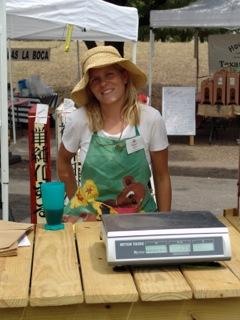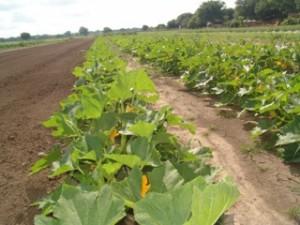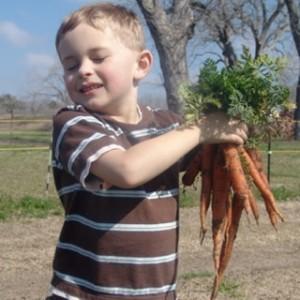A Young Farmer Explains the Art of Farming
Steele Farms have been farming and ranching for over 150 years in Seguin, Central Texas, and a new generation of young farmers has taken over the reins. A college friend of mine, Barbara Wagner-Steele, is running the family farm with her husband and three small children.
An interview with Barbara sheds light on the day-to-day life of a young farmer, and provides invaluable advice for aspiring farmers.
What is a typical day for you?
Morning assembly is at 6 a.m. in summer and 8 a.m. in winter. Following assembly, we feed the animals and have breakfast in the barn (except in winter when it’s too cold in the barn).
In the summer we do all the hard labor before 11 a.m. due to the extreme heat. That includes plowing, weeding and planting. During delivery days or farmers’ market days we also pick, wash and pack the vegetables.
The afternoon is mainly used to do administrative work for FieldFresh (our delivery service) and delivery prep for the following day. In the evening, I work in the greenhouse often until after sunset. Thanks to the lights on the tractor we also plant until late at night. Summer days are just way too hot and winter days too short. Sunday is family time. We don’t work, other than feeding the animals.
In what ways do you think organic agriculture benefits the farmer?
The land is our lifeline. The healthier your land, the longer it will be sustainable and therefore the longer can we farm on it. We were lucky enough to find land that had not been used by former farmers. It once held cattle on it, but they had been gone for more than 10 years which was important to know.
Many ranchers use weed killers that contain a chemical that kills broad leaf vegetation. It remains in the soil for many years, but eventually will be washed out. We owe our success to a good mixture of sandy loam soil and rich nutrients provided to the land by the Guadalupe River.
What advice can you give aspiring young farmers?
Don’t borrow money to start a farming operation. Mother Nature can be harsh. Start with a small garden (< 1/2 acre) that you plow by hand. Buy a used hand tiller and plant your seeds by hand. It is very rewarding when those first sprouts are visible.
Attend a weekly farmers market. Once you have learned the work that is involved and you have the land to increase your farming operation, build a green house, dig a well, buy a tractor, seed planter, bed shaper, drip-tape layer, plastic mulch layer, cultivator and organic fertilizer (preferably with cash – go to agricultural auctions and use Craig’s List). You don’t become a farmer overnight.
Farming is an art that involves both muscle and brain. It’s more than just sticking a seed in the soil. It requires time and the willingness to educate yourself by reading books, listening to nature, and learning by experience.
Editor’s Note:
According to the US Department of Agriculture’s 2007 Census of Agriculture, there are over 64,000 family-owned farms in California. Meet the growers of your produce by visiting your local farmers’ market or farm stands. Certain farms also are open to the public. It’s a great way to see how and where your food is grown! For a list of farms to visit in your region, go to http://www.calagtour.org/. For more information about Steele Farms, visit http://www.steelefarms.org/FieldFresh.html.




